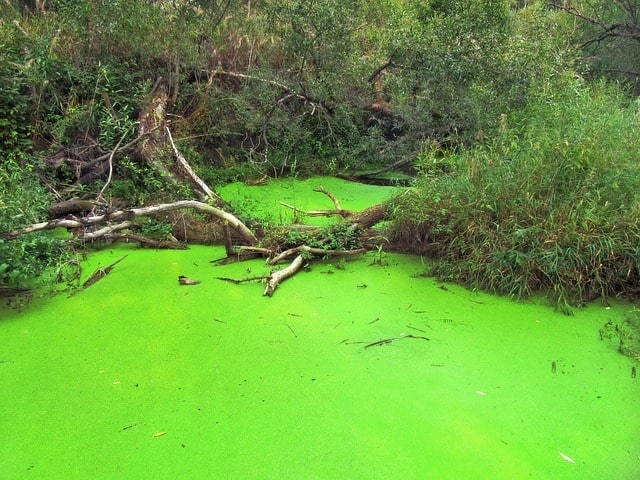100% eco-friendly algae-based ink

When we mention eco-friendly inks or biodegradable ink such as vegetable ink, soy ink or water-based ink. The term vegetable, soy, and water make it sounds like you can safely dump the ink waste down the drain. Some may even think that it could be safely consumed. However, this is not the case. These, vegetable, soy and water-based ink are not 100% eco-friendly. They still contain chemical materials that are harmful to the environment. Let’s investigate how that is the case by looking at a general ink composition.
In general ink compose of Colorant, Vehicle and Additives.
Colorant is what gives the ink color. Colorant usually makes up less than 20% by volume of ink. The colorant is either pigment or dyes. Commercial printing ink uses pigment most of the time. The difference between a pigment and a dye is that dyes are soluble in liquid, and pigments are not. You can think of dyes like salts that dissolve in water and pigments are like mud that gets mixed up in the water but does not dissolve. Therefore, dyes are chemically bound to the material and pigment stick to material instead.
Take an example, the majority of pigment uses carbon black as colorant. This includes vegetable, soy and water-based ink. Carbon black is a material produced by the incomplete combustion of heavy petroleum. Sometimes pigments come from minerals such as cobalt, titanium cadmium and zinc. All these materials are not eco-friendly as it is a nonrenewable recourse.
Vehicle makes up the majority of the ink by volume. The vehicle is the liquid component of the ink that holds the colorant and transfer it onto the printed material. This is where vegetable oil, soybean or water can be used as a vehicle to provide an eco-friendlier solution over traditional solvent. Typically, the ink could be considered soy ink or vegetable ink when 6%~40% of the ink volume contains soy or vegetable oil.
Additives are materials that help to provide or enhance certain properties of the ink. For instance, to support the flow and lubrication of the ink, to support the drying process, to defoam the bubbles and to help ink resist scratches once on the substrate.
From the ink composition you know now that even when a portion of the vehicle in the ink can be composed of eco-friendly substances like vegetable, soy or water. The colorant within the ink is usually not eco-friendly.
The definition of a 100% eco-friendly ink is that it can go down the sink without causing any environmental harm. Algae inks are inks that uses algae as pigments. An algae ink can compose up to 16% algae cells and 63% water. Algae require mainly water, sunlight and Co2 to grow. Algae do not require fertilizer herbicides or genetically modified seeds. All this makes algae ink an 100% eco-friendly ink solution.

Article by Daywey Chen, KYMC


























